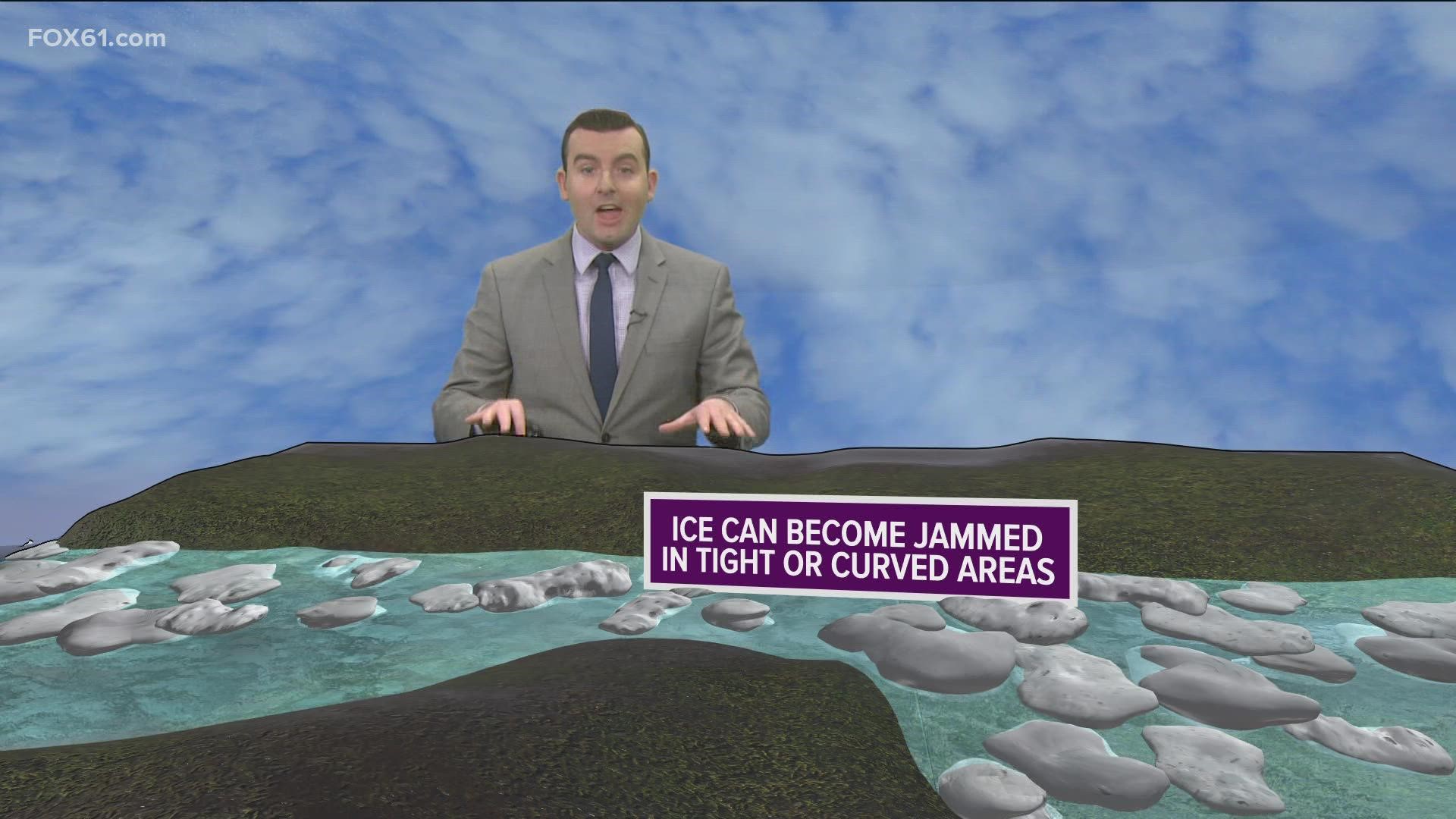CONNECTICUT, USA — January 2018 brought wild swings in weather. The month started with arctic cold, but the middle of the month ushered in a sudden thaw.
Those swings in temperature helped trigger historic ice jams on rivers across the state.
The largest was on the Connecticut River in East Haddam, where an ice jam at the Swing Bridge clogged water and ice more than six miles upriver.
In Kent, a state of emergency lasted more than a month, as the Housatonic River overflowed its banks, flooding portions of Route 7.
There are two kinds of ice jams: Freeze ups and break ups.
Freeze up jams are more common farther north, in parts of northern New England, as they occur during sudden, extremely cold weather.
In southern New England, break up ice jams are more common, as they occur during thaws after ice has slowly developed. That's what we'll focus on here.
When temperatures rise above freezing for a sustained period of time, thick ice sheets on rivers and streams can begin breaking apart.
Pieces of floating ice carried by the current can become jammed in tight or curved areas in the water. These jams can develop near river bends, tributaries, downstream of dams and upstream of bridges or obstructions.
The 2018 jam, seen below, started at the East Haddam Swing Bridge.
The water that is held back may cause the river to overflow its banks upstream, flooding areas with either water or large chunks of ice.
If the jam suddenly breaks, then flash flooding may occur downstream.
- Is the ice around 1 foot thick or more?
- Is the daily average temperature (average of the high and low) forecast to be 42°F or more?
If both of these conditions are met, the risk for ice jams can increase. However, it can be incredibly difficult to predict the impact of an ice jam, or how long it may be stuck in place.
Rainfall or snowmelt during a thaw can make jams more likely, as rising water helps to lift and break up the ice, according to the National Weather Service.
This week, Thursday and Saturday have the potential to come close to the temperature threshold for ice jams. That said, it's highly unlikely we will experience anything close to what occurred in 2018.
The USCG Bollard has been cutting ice on the Connecticut River several times this winter, in an effort to prevent a jam.
Ryan Breton is a meteorologist at FOX61 News. He can be reached at rbreton@fox61.com. Follow him on Facebook, Twitter and Instagram.
---
Have a story idea or something on your mind you want to share? We want to hear from you! Email us at newstips@fox61.com
---
HERE ARE MORE WAYS TO GET FOX61 NEWS
Download the FOX61 News APP
iTunes: Click here to download
Google Play: Click here to download
Stream Live on ROKU: Add the channel from the ROKU store or by searching FOX61.
Steam Live on FIRE TV: Search ‘FOX61’ and click ‘Get’ to download.

